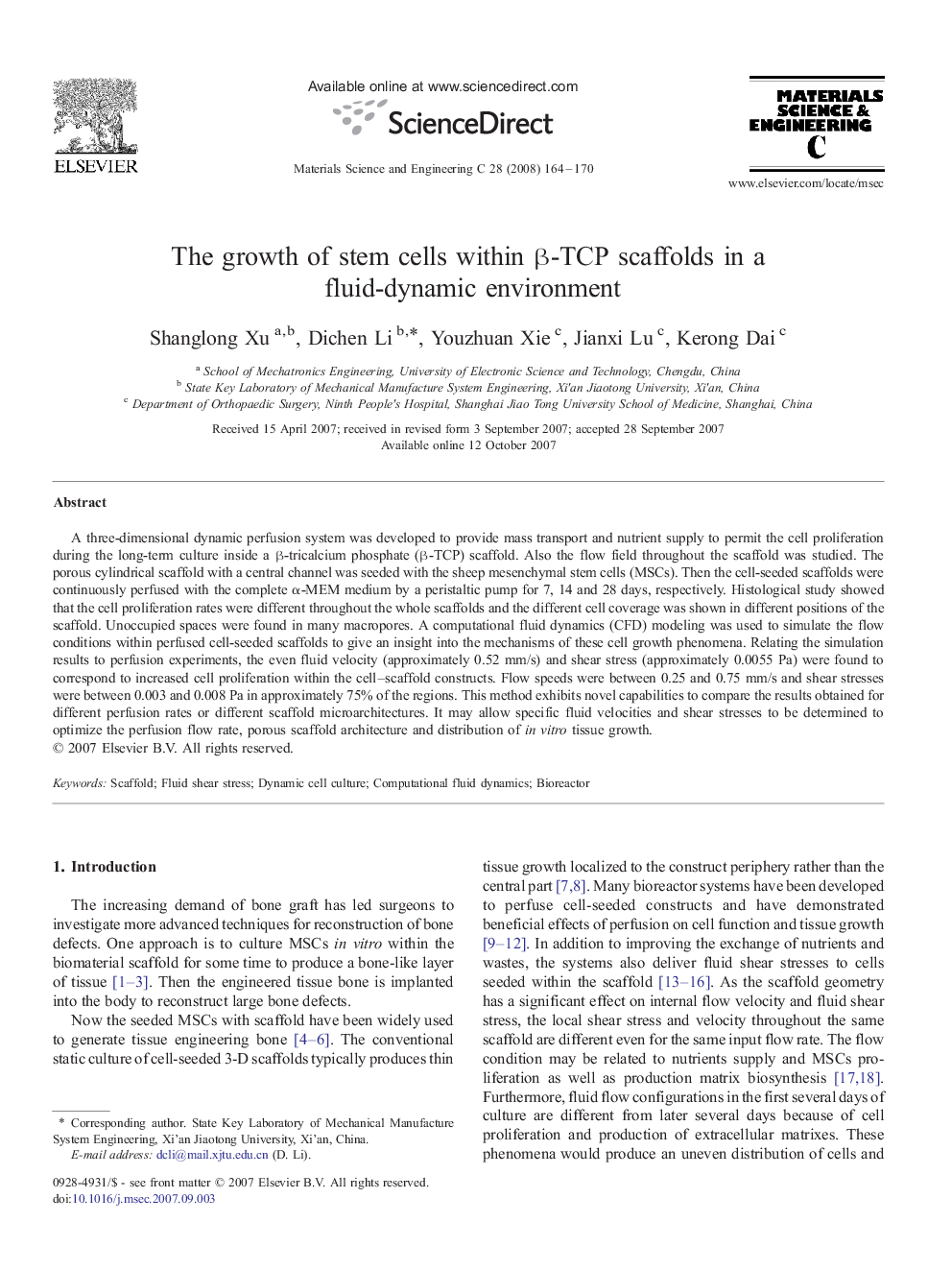| Article ID | Journal | Published Year | Pages | File Type |
|---|---|---|---|---|
| 1430072 | Materials Science and Engineering: C | 2008 | 7 Pages |
A three-dimensional dynamic perfusion system was developed to provide mass transport and nutrient supply to permit the cell proliferation during the long-term culture inside a β-tricalcium phosphate (β-TCP) scaffold. Also the flow field throughout the scaffold was studied. The porous cylindrical scaffold with a central channel was seeded with the sheep mesenchymal stem cells (MSCs). Then the cell-seeded scaffolds were continuously perfused with the complete α-MEM medium by a peristaltic pump for 7, 14 and 28 days, respectively. Histological study showed that the cell proliferation rates were different throughout the whole scaffolds and the different cell coverage was shown in different positions of the scaffold. Unoccupied spaces were found in many macropores. A computational fluid dynamics (CFD) modeling was used to simulate the flow conditions within perfused cell-seeded scaffolds to give an insight into the mechanisms of these cell growth phenomena. Relating the simulation results to perfusion experiments, the even fluid velocity (approximately 0.52 mm/s) and shear stress (approximately 0.0055 Pa) were found to correspond to increased cell proliferation within the cell–scaffold constructs. Flow speeds were between 0.25 and 0.75 mm/s and shear stresses were between 0.003 and 0.008 Pa in approximately 75% of the regions. This method exhibits novel capabilities to compare the results obtained for different perfusion rates or different scaffold microarchitectures. It may allow specific fluid velocities and shear stresses to be determined to optimize the perfusion flow rate, porous scaffold architecture and distribution of in vitro tissue growth.
